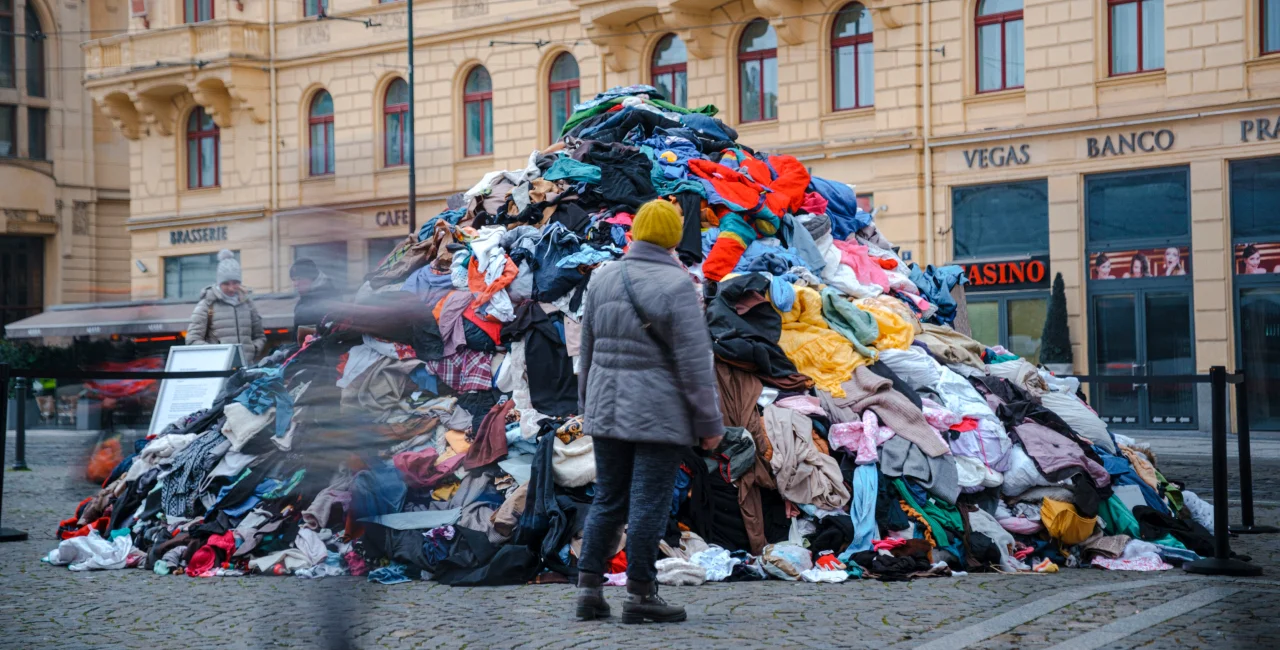A massive pile of clothing, weighing approximately four tons, was erected in Prague’s Náměstí Republiky in front of the Palladium shopping mall on Monday to draw attention to the growing problem of textile waste.
Beginning in 2025, Czech municipalities will be required to implement new regulations for the separate collection and recycling of textile waste. To highlight this pressing issue, the city of Prague, in partnership with the Prague Innovation Institute, organized a conference titled Circular Cities and Business 3: Cities as Overstuffed Closets at the Hybernská Campus.
The clothing pile, provided by Diakonie Broumov, symbolizes the amount of textile waste generated by an average family over their lifetime. It also represents the annual carbon footprint of ten Czech citizens if the clothing were new. Each Czech citizen discards around 10-12 kilograms of textiles annually.
Fast facts on fast fashion
- Amount of textile waste: Approximately 4 tons of clothing displayed in Prague to symbolize the average textile waste generated by a family.
- Annual textile waste per person: 10-12 kg (similar to the European average)
- Water consumption for a cotton t-shirt: Up to 2,700 liters
- Textile waste as % total waste: More than 2 percent of waste in Prague's bins
- Textile waste in the EU: Over 5.8 million tons of textile waste is discarded annually in the EU (approximately 11 kg per person).
“Prague has long been working to reduce the amount of reusable waste,” said Jana Komrsková, Deputy Mayor for the Environment, in a press statement. “Textiles account for over two percent of our waste. While this may seem small, it’s a category that can be repurposed. That’s why we’re exploring options to open a reuse center where clothing can be given a new life.”
The conference brought together experts from various sectors to discuss solutions to the textile waste crisis. Petr Hladík, the Minister of the Environment, emphasized the importance of the new legislation, which mandates separate textile collection starting in 2025.
“The best waste is the waste that is never created,” said Hladík. “But when items reach the end of their life, we must ensure they are recycled effectively.”
The rapid growth of fast fashion has contributed significantly to the textile waste problem. To address this issue, cities and businesses must collaborate to promote sustainable fashion practices, such as extending the lifespan of clothing and improving recycling processes.












 Reading time: 2 minutes
Reading time: 2 minutes 
























